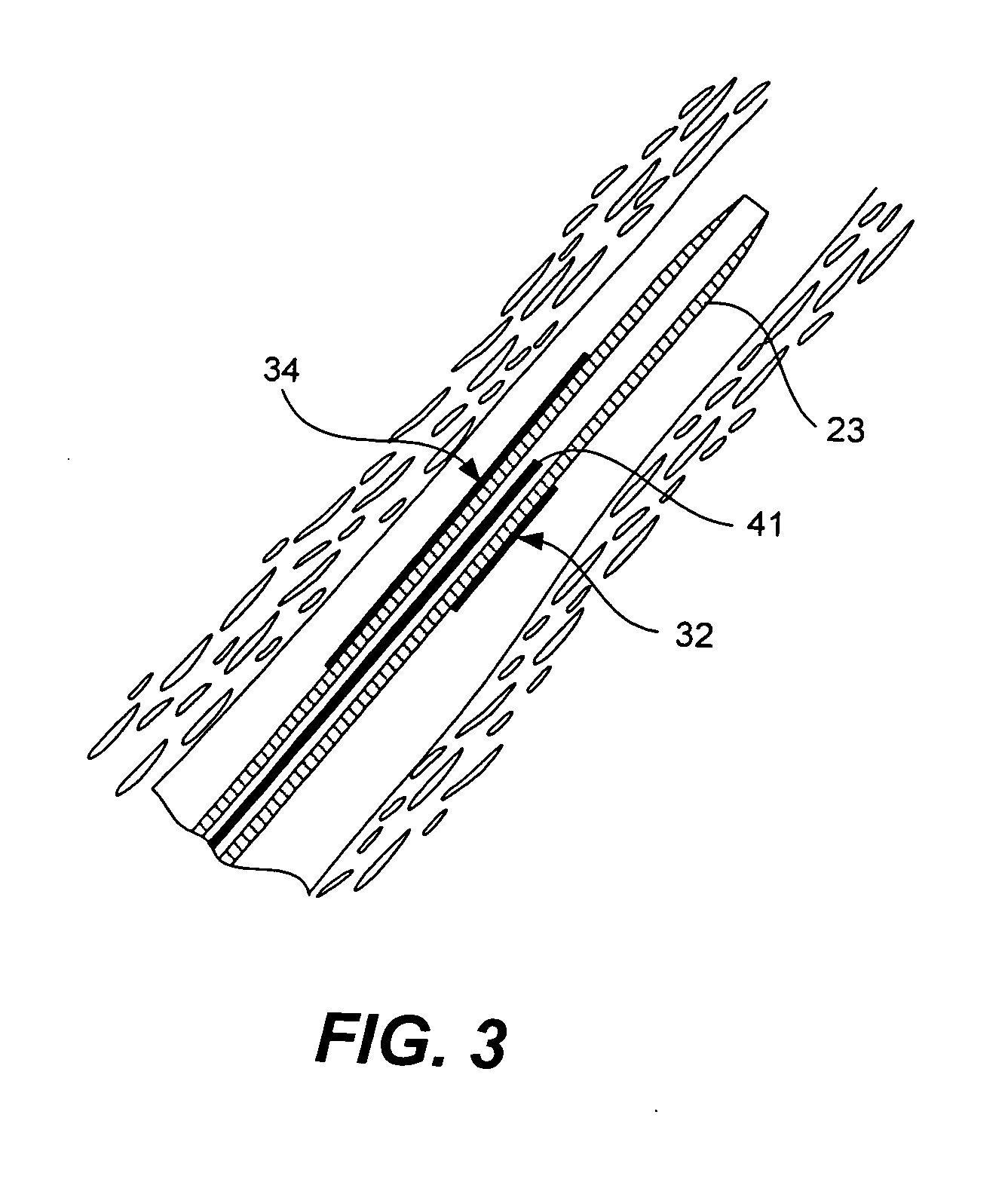Catheter having markers to indicate rotational orientation
a technology of rotating orientation and catheters, applied in the field of radiopaque markers, can solve the problems that the components at the working end of the catheter (e.g., balloons, ports, etc., may be difficult to identify using fluoroscopy
- Summary
- Abstract
- Description
- Claims
- Application Information
AI Technical Summary
Benefits of technology
Problems solved by technology
Method used
Image
Examples
Embodiment Construction
[0014]The present invention relates generally to specific marker configurations that are suited for use with specific types of catheters.
[0015]Referring initially to FIG. 1, a marker arrangement arranged to mark the rotational orientation of the distal end of a catheter in accordance with one embodiment of the invention will be described. The catheter 21 is generally formed from an elongated tubular member 23 having central lumen 25 formed therein. The central lumen opens at the distal end of the catheter at a distal port 27 such that the catheter can be inserted into a target vessel over a guide wire 41. The catheter also has a side port 29 that opens to the side of the catheter. This type of side port can be useful in a variety of different catheter designs, as for example in certain bifurcation catheters, atherectomy catheters, perfusion catheters, and support catheter designs.
[0016]A first longitudinally extending marker 32 is positioned on the side of the catheter opposite the ...
PUM
 Login to view more
Login to view more Abstract
Description
Claims
Application Information
 Login to view more
Login to view more - R&D Engineer
- R&D Manager
- IP Professional
- Industry Leading Data Capabilities
- Powerful AI technology
- Patent DNA Extraction
Browse by: Latest US Patents, China's latest patents, Technical Efficacy Thesaurus, Application Domain, Technology Topic.
© 2024 PatSnap. All rights reserved.Legal|Privacy policy|Modern Slavery Act Transparency Statement|Sitemap



